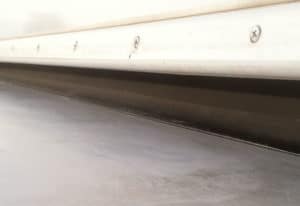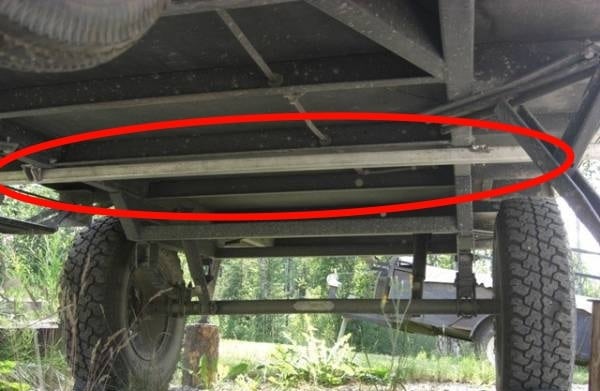Wouldn’t it be fantastic if you had a camper which was compact and easy to tow, but which offered extra space when you were parked? If you are in the market for a “best of both worlds” camper, you may want to consider a pop-up model which includes slide-outs.
A pop-up camper with slide-out is exactly what they sound like—sections of your camper which you can slide out when you are parked to expand the interior. Most are electric or manual, but some are hydraulic. With the “pop-up” style, the roof and walls are made of canvas (other styles of slide-outs have walls made out of aluminum, fiberglass, or other common materials used in camper and RV construction).
Is a pop-up camper with slide-out the right type of camper for you? How do you choose a quality model? Let’s go over the pros and cons and then talk about features that are important in slide-outs. That way you can choose one which is going to serve you well over years of use.
What Are the Pros of a Pop-Up Camper With Slide-Out?
- Pop-up sections can add more room and functionality. When your pop-up sections are expanded, you can enjoy a sense of luxurious spaciousness in your camper. But you also can benefit from added functionality in the form of a larger and more comfortable dining area, kitchen, sleeping space, or so forth.
- With pop-ups, you have flexibility. Need to park in a narrow space that cannot accommodate your slide-outs? Just collapse them until you can park in a wider lot.
What Are the Cons of a Pop-Up Camper With Slide-Out?
- Slide-outs tend to up the price of the camper. They also need to be maintained, which can mean added costs over time.
- A camper with slide-outs will weigh more than one without.
- Leaks can be an issue with slide-outs (more on that below).
What to Look for When Buying a Used Pop-Up Camper With Slide-Out
A tight seal around the lip of the slide-out.
If you have experience with campers and RVs, you know that the battle against leaks is eternal. Slide-outs are among the most vulnerable parts of a camper and are prone to developing leaks.

To prevent this as best you can shop for a camper which includes a tight, high-quality rubber seal around the slide-out lip. A weak, old seal will not do its job for long, so be extra mindful of this when shopping for a used model.
A strong non-rusted or reinforced frame.
Slide-outs are heavy. When they are extended, they exert a continuous force on the camper. Over time, this can weaken the structural integrity and lead to warping and cracking. Make sure that the frame of the slide-out is in sound condition before you buy a camper. Avoid those which have developed rust. A reinforced frame is a plus.

A backup crank.
An electric motor is an excellent feature because it removes the manual labor involved in pulling out a heavy slide-out. But there may be times when you are staying in campgrounds which are off-the-grid. In those situations, you may not be able to power the motor. Plus, motors can fail.
For this reason, it is smart to shop for a camper that comes with a manual crank. You can use this as a backup if needed.
Robust stabilizers.
Stabilizers are typically an after-market product, not something included with a camper. They may be included when you purchase an old camper, however, or you can shop for them yourself separately.
Do you need them? Are they important? This is pretty much a subjective matter. The upside of stabilizers is that they can help support the weight of the slide-outs. While slide-outs are manufactured to be sturdy and stable, they do still lead to stress-related damage over the years. Stabilizers may reduce that.
On the downside, stabilizers may actually lead to the same type of damage you are trying to avoid. Think about how your camper jostles around as you walk across it. Now picture the effect of that movement outside. The bottom of the slide-out is pressing up and down against the stabilizers.
You can imagine how the stabilizers might put too much pressure on the slide-outs, resulting in warping, denting or cracking. If they are on unstable ground (like dirt), that can also contribute to problems.
Whether you use stabilizers or not is really up to you. You’ll need to weigh the pros and cons for yourself and make a determination.
How Do you Maintain the Slide-Outs?
No matter what types of slide-outs your pop-up camper is equipped with, you will need to lubricate them now and again so that they can continue to move smoothly and easily. I have always used PTFE dry-lube for my slide outs. I simply apply it at the beginning of the camping season, then extend and retract the slide-out a few times.
Check on the status of your seals often. If they turn brittle, they will no longer perform their function. Apply protectant to prevent this, and if gaps do form, seal them quickly before they get worse. Remember to maintain not just the top and side seals, but also the bottom seals.
Another thing you should be aware of is that your slide-outs ought to be centered. As time goes by, however, they may shift out of place. If you notice this, you may need to call in a pro to fix the alignment. Doing this is critical if you want to extend the life of your seals. Note that alignment problems may not be obvious to the eye. You might need to grab a tape measure to find out if something is off.
Conclusion
You now are familiar with some of the pros and cons of owning a pop-up camper with slide-out, and you know what to look for when you are shopping and how you can take care of your slide-outs so that they (and your camper) stand the test of time. If you pick a camper in great condition and are diligent in your maintenance, you should be able to enjoy it for years to come.

